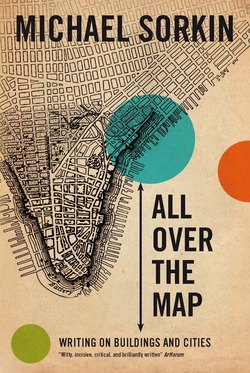Читать книгу All Over the Map - Michael Sorkin - Страница 17
На сайте Литреса книга снята с продажи.
Оглавление11
The World Peace Dome
Perhaps there was no avoiding it, given the pressure. And there was a certain logic to the restoration of the skyline, to patching the gaping hole. But given the growing certainty that building was going to be the “solution,” we speculated about a form other than that of a tower or towers. We wanted to resist both the triumphalist phallomorphology of a bigger, higher, “better” version of the Trade Towers and to find a form that spoke to issues of harmony and peace, while still assuming some prominence on the skyline.
A dome seemed at once legible, evocative, and different. As a place for people to gather at all times of the year, it satisfied what seemed the most important activity the site should embrace—peaceable assembly. Marking and commemoration could take place with the reconstruction of the footprints and the planting of lush, year-round gardens, and people could flow across the site from every adjoining street. The big dome would serve as an enclosure for the transit center that would inevitably become part of any project. Finally, we placed a series of crescent-shaped towers within the dome to house other uses we thought important: a panoply of cultural institutions and a home for people and organizations working for world peace, perhaps the UN or a center for NGOs. Although the form of these structures was not strictly predictive of the style of their occupation, it did seem very important to assert that all uses were not equivalent and that reconstruction of the site had to be predicated on choosing the most appropriate ones.
2002
